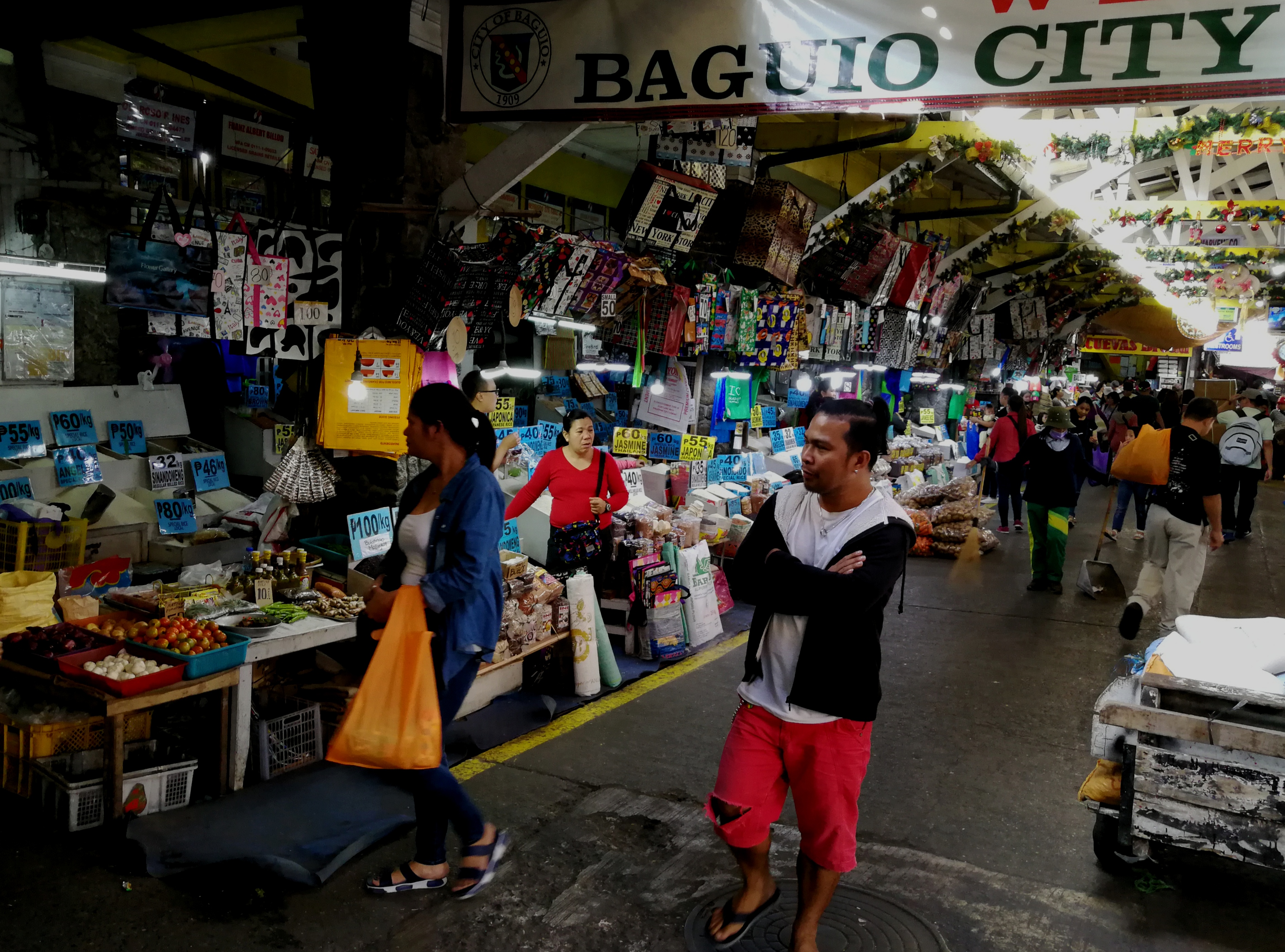Vendors to pay more for new Baguio market

MARKET DAY: Every tourist won’t leave Baguio City without visiting its market for fresh vegetables and flowers grown in neighboring Benguet towns and souvenirs produced by local artisans. INQUIRER PHOTO
BAGUIO CITY—Market vendors here may have to pay a much higher rent than the current rate of P11 per square meter to help shoulder the cost of putting up market buildings worth P6 billion once the city government secures a loan for the project.
The city council on Monday approved the design of the five-story buildings, which would be put up in four stages at the 3-hectare city property from 2020 to 2023.
A redeveloped market will charge P50 per sq m for people selling vegetables, meat, fish, souvenirs and even “wagwag,” or imported secondhand garments, following a feasibility study, a financial audit and public consultations in 2019, according to Councilor Mylen Yaranon.
Redevelopment plan
Yaranon, an architect, led the technical working groups which drew up modernization plans for the market and Burnham Park. The approved design will be transmitted to financial institutions willing to bankroll the project. The new market is one of the major plans for Baguio’s redevelopment presented at the meeting on Jan. 10 with Tourism Secretary Bernadette Romulo-Puyat and Interior Secretary Eduardo Año.
But Mayor Benjamin Magalong said he preferred a joint venture arrangement, which would involve firms with the “core competence to manage markets and malls.”
A joint venture deal will be open to market vendors, who have formed a small corporation and have been raising P2 billion for the project, Magalong told an executive-legislative meeting hours before the council session.
The meeting addressed concerns raised by 3,000 vendors who feared they would be displaced.
According to Magalong, it may take six months before construction starts. But he assured those renting 2,493 permanent stalls and 1,106 temporary stalls that they would be accommodated in the new market.
Not too massive
Guided by a city survey, the new buildings, which will be dedicated to specific market goods, will not exceed five floors because of a sentiment that the market “should not be too massive,” Yaranon said.
Many people also addressed the market’s cultural and historical legacy so the foundations of the original stone market would be incorporated into the new buildings, she said.
The design incorporates Cordillera elements, segregates pocket parks and introduces elevated walkways that allow customers to visit the market buildings above the busy traffic along Magsaysay Avenue and Abanao Street.
The public market was first put up in 1913, four years after Baguio was officially chartered as a city. It had undergone changes after fires gutted stalls in 1960, 1970, 1993 and 2008.
The latest modernization plan for the public market was supposed to have been undertaken by Uniwide Group of Companies in 1998. But the project was hampered by a legal challenge from Baguio vendors that lasted for more than 20 years.
Last year, Magalong and the city council voided the Uniwide contract, following the company’s court-ordered dissolution and liquidation.
Yaranon said two temporary markets for the vendors would be put up near the slaughterhouse compound and at the former Philippine Rabbit bus terminal. —VINCENT CABREZA